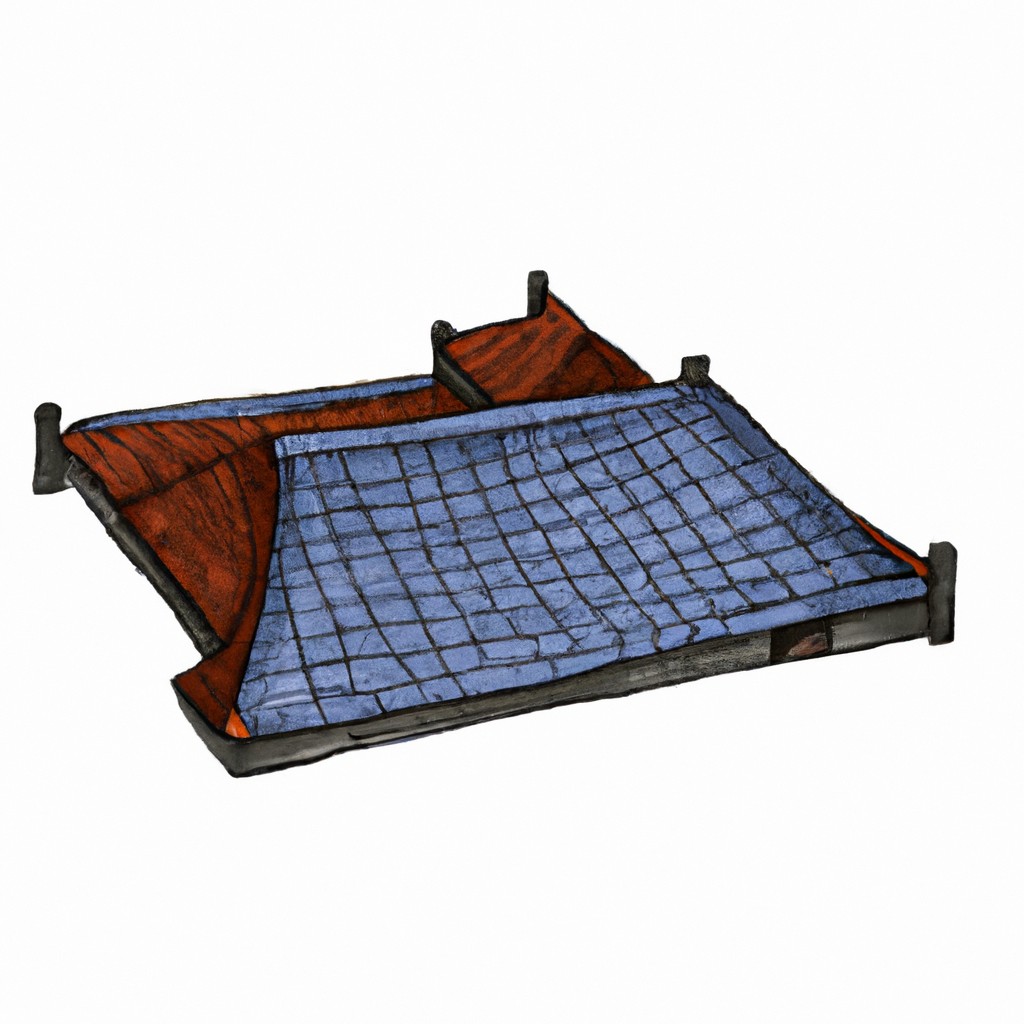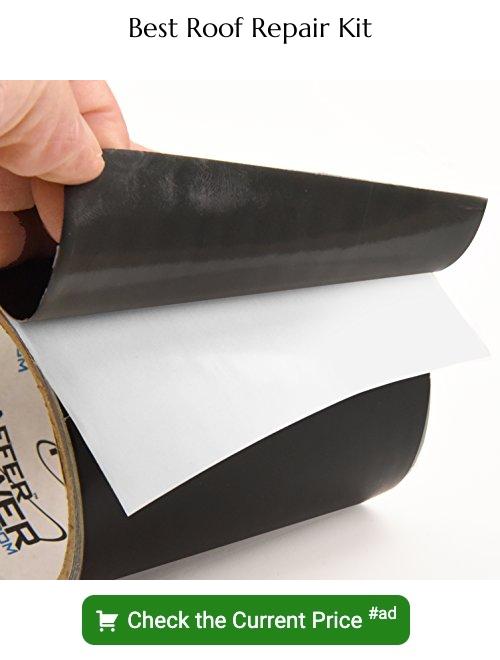Last updated on
This informative guide will provide you with a comprehensive understanding of fortified roofs, their benefits, installation process, and key considerations for homeowners.
Key takeaways:
- Fortified roofs enhance durability and resilience under severe weather conditions.
- Benefits include reduced repair costs, improved safety, insurance incentives, energy efficiency, and increased property value.
- Steps for fortified roofing involve upgrades in deck attachment, roof covering, sealing, strengthening, bracing, and connections.
- Select a licensed and experienced contractor with warranties and certifications.
- Regular maintenance and inspections are essential to uphold a fortified roof’s integrity.
Definition of a Fortified Roof

A fortified roof is an enhanced construction standard designed to bolster a structure’s resilience, especially under severe weather conditions. Originating from the Insurance Institute for Business & Home Safety (IBHS) standards, this roofing concept emphasizes durability and mitigation of damage due to natural disasters.
It follows specific engineering and material guidelines that exceed typical building codes, focusing on aspects such as:
- Strengthened roof deck attachment to resist high winds.
- Superior shingle attachment methods to prevent uplift.
- Water barriers to reduce leakage if shingles are stripped away.
- Impact-resistant materials that withstand hail and debris.
By incorporating these features, a fortified roof aims to extend the lifespan of the roof and offer homeowners peace of mind, reduced repair costs, and often, lower insurance premiums.
Benefits of a FORTIFIED Roof
Enhanced durability stands as a primary advantage, ensuring the roof can withstand severe weather conditions, including high winds and heavy rain. This resilience contributes to a significant reduction in the risk of damage, equating to fewer repairs and lower costs over the lifespan of the roof.
The safety of occupants is markedly improved due to the rigorous construction standards that a FORTIFIED Roof must meet. This commitment to structural integrity means greater peace of mind for homeowners, particularly during extreme weather events.
Homeowners may also benefit from insurance incentives, such as discounts or more favorable policy terms. Insurance providers often recognize the reduced risk associated with FORTIFIED Roofs and may offer financial advantages to homeowners who choose to implement them.
Energy efficiency is often increased with a FORTIFIED Roof due to the high-quality materials and methods used. This can lead to a reduction in heating and cooling costs, contributing to both financial savings and a lower carbon footprint.
Lastly, the property value may see a positive impact. Homes with FORTIFIED Roofs can be more attractive to potential buyers, recognizing the long-term benefits and cost savings associated with a durable and energy-efficient roofing system.
Steps to FORTIFIED Roofing
Achieving a fortified roof involves a series of deliberate upgrades and construction practices designed to enhance resilience against severe weather. The key steps are:
- Deck Attachment: Upgrade to ring-shank nails spaced more closely together than in standard practice, which securely fasten the roof deck to the structural frame, reducing the risk of uplift during high winds.
- Roof Covering: Select impact-resistant shingles, tiles, or other roofing materials that meet industry standards for withstanding hail and wind-blown debris impacts, ensuring they are correctly installed to resist high winds.
- Seal Roof Deck: Apply a water-resistant layer across the roof deck using a sealed roof system which minimizes water intrusion should the roof covering be blown off during a storm.
- Strengthen Roof Edges: Enhance the strength of the roof’s edges, often the first part to fail in extreme wind, with metal drip edges properly secured to resist peeling away.
- Bracing Gable Ends: If applicable, fortify the gable ends of the roof to prevent collapse by installing braces that connect the top of the gable end to the rafters or trusses.
- Roof to Wall Connections: Install metal straps or clips that create a continuous load path between the roof structure and the walls, considerably improving the roof’s resistance to uplift.
- Attic Ventilation: Ensure that soffit vents, ridge vents, and other attic ventilation components are properly installed and secured to prevent them from becoming entry points for wind and water.
Before pursuing these steps, consult with a certified FORTIFIED program evaluator, who can conduct a current condition assessment and recommend specific improvements tailored to your home’s design and locale susceptibility to storms.
How to Select a Roofing Contractor
Opting for a contractor to install a fortified roof requires careful consideration. Begin by ensuring the company is licensed and insured, which protects against liability and substandard work.
Gather local references to assess past performance and customer satisfaction. Verify their experience with fortified roofs specifically, as this expertise is critical for proper installation and to meet the designated standards.
Inquire about warranties offered for both materials and labor to safeguard your investment. It’s equally important to request a detailed estimate in writing, outlining all costs, timelines, and the process involved.
Lastly, check for any certifications from roofing material manufacturers or accreditation from the Insurance Institute for Business & Home Safety (IBHS), which will further attest to their ability to install a fortified roof properly.
Maintenance of a FORTIFIED Roof
Regular inspections play a pivotal role in upholding the integrity of your fortified roof. Ideally, seek a professional evaluation twice a year and after major weather events. Look out for missing or damaged shingles, which can compromise the roof’s resilience.
Keep gutters clean and free-flowing to prevent water buildup, which can lead to leaks and structural damage over time. Trim nearby trees to avoid branches scraping against the roof or puncturing it during storms.
Ensure that sealants and flashing around vents, chimneys, and roof joints remain intact. These are critical for waterproofing and preventing water infiltration.
Tackle minor repairs promptly to prevent them from escalating into more significant issues. Use materials that match the quality and standards of your FORTIFIED roof to ensure consistency in protection.
Finally, keep documentation of all maintenance activities, as they can be crucial for warranty purposes and in validating your roof’s fortified status, especially when it comes to insurance claims or resale considerations.
FAQ
Is a fortified roof worth it?
Indeed, a fortified roof is highly beneficial due to its ability to minimize storm-related damage, often leading to sizable insurance discounts ranging from 20% to 60%.
What does it mean when a house is fortified?
A fortified house refers to a type of building that emerged in Europe during the Middle Ages, characterized by significant added fortifications.
Is a metal roof a fortified roof?
Yes, a metal roof can be a fortified roof as the FORTIFIED program’s requirements can be applied to all roof types, including metal.
How does the process of fortifying a roof add to its overall durability?
Fortifying a roof enhances its overall durability by reinforcing its structural integrity, thereby helping it withstand extreme weather conditions and resist leaks or damages.
What are the common materials used in constructing a fortified roof?
Common materials used in constructing a fortified roof include metal, asphalt, wood, slate, and clay or concrete tiles.
How do fortified roofs stand up against extreme weather conditions compared to regular roofs?
Fortified roofs are designed with more robust materials and construction techniques, making them more resistant to extreme weather conditions compared to regular roofs.





